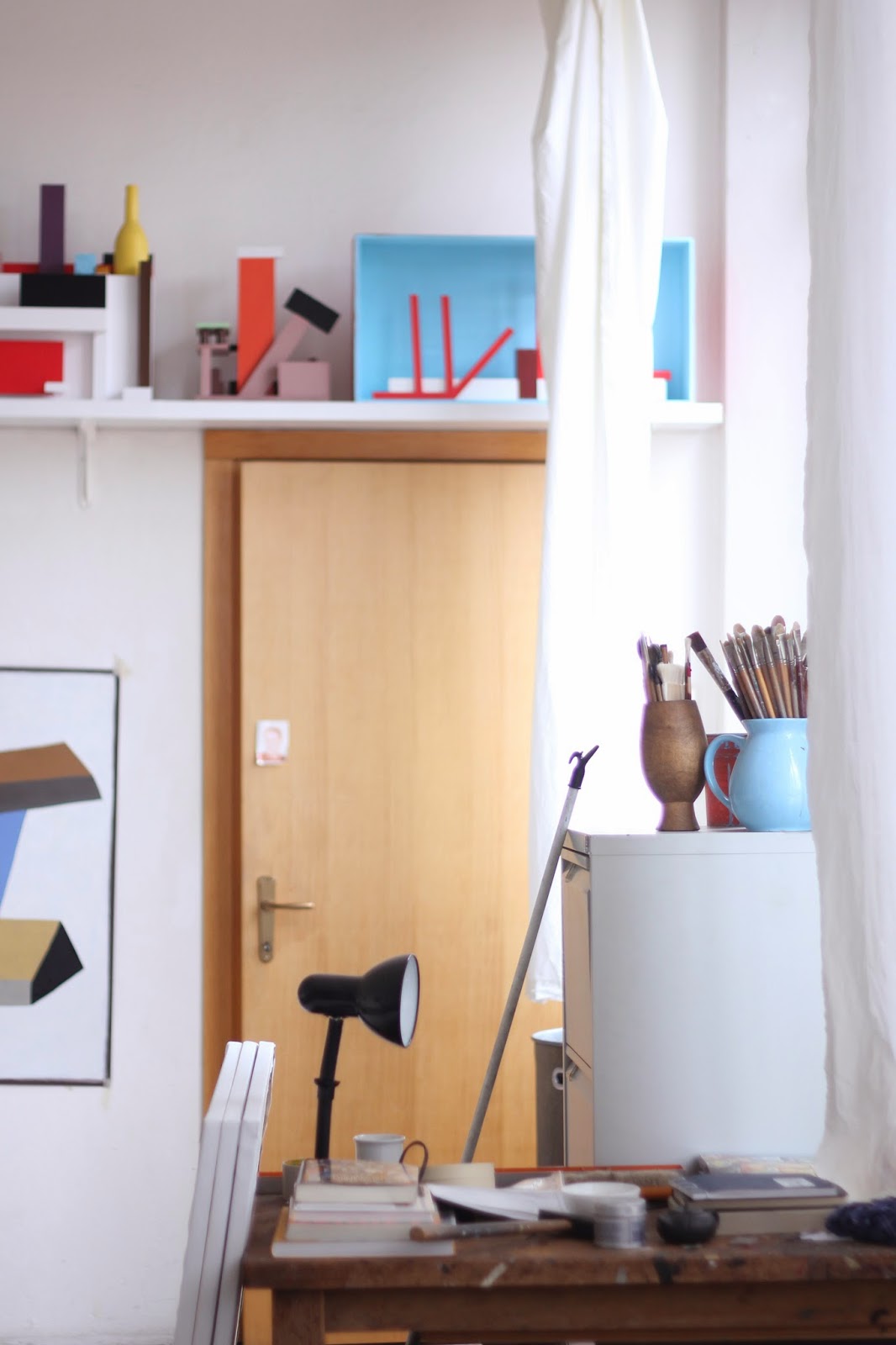Palazzo Orlandi is a late-18th century home built by an Italian bourgeois family who were Tuscan textile entrepreneurs. When Sabrina Bignami purchased this home, after being unoccupied for twenty years, she started the restoration period which lasted about 3 years. She is an architect who has specialized in restoration and the founder of the b-arch studio.
Old mirror is a nice and simple idea to protect the walls from the fire.
Vintage Orange Juicer
These unusual Neapolitan coffee pots 'Caffettiera Napoletana' are not very common anymore in Italian households like it used to be in the fifties. Unlike the moka pot that I use in my home, this is slower and more complicated--if you don’t fit the four components together correctly, and turn upside down after the water starts boiling you won’t have any coffee. However as it always is in Italian lifestyle, the slower the better..
I personally love old architecture and with interior design I love mixing old and new furniture. Sabrina, while maintaining the old architecture and restoring--not remaking--it, also followed her desire of introducing contemporary elements. Any piece can be removed, placed again, rethought without distorting the ancient abode that holds the evidence of being lived in through the ages.
This dinnerware set for 49 people was found in the house, left from the family like other objects as well as fabric samples. The family had a wool mill in Prato.
The bath tub between two rooms
All the frescoes with pastoral landscapes, religious and mythological themes, were applied between 1790 to 1815 to this palazzo by Tuscan fresco painter Luigi Catani, a famous painter who also worked for the grand duke of Tuscany both at Palazzo Pitti in Florance and in various Medici villas. They were restorated and other components such as floor, windows, and doors were saved. Partially missing components were left as they were, and are accepted as the consequence of the aging process. 
Through secret small doors you can access small bathrooms.
In this book called 'Take Care of Yourself' - Sabrina's favorite- French artist Sophie Calle presents 107 outside interpretations of a "breakup" e-mail she received from her lover the day he ended their affair. Published in 2007 for the Venice Biennale, all the women interpreters were asked to analyze this letter according to their professions. A psychoanalyst studies her ex boyfriend's psychology, a mediator tries to find a path towards reconciliation, a proofreader provides a literal edit of the text, etc.
 Casa Orlandi has high ceilings and an unusual U-shaped layout, almost all the rooms opening to a central courtyard terrace. Now the terrace is an outdoor dining-room with a table from an old textile factory and Panton chairs.
Casa Orlandi has high ceilings and an unusual U-shaped layout, almost all the rooms opening to a central courtyard terrace. Now the terrace is an outdoor dining-room with a table from an old textile factory and Panton chairs.






































































